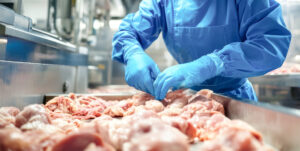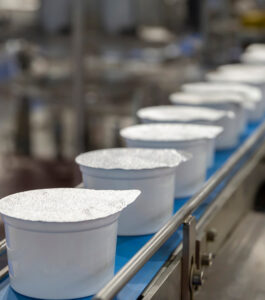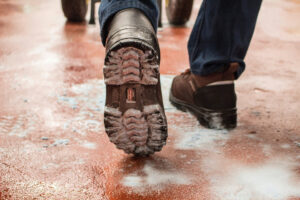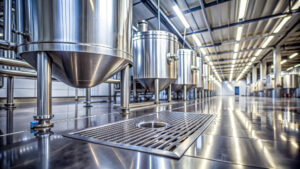Área de preocupación
Sterilex was contacted by a poultry harvest processing plant to assist with Salmonella pathogen reduction pre-chill.
Edición
Pre-chill Pathogen Reduction – Poultry Harvest
Even with appropriate antimicrobial intervention steps in pre-chill, data collected during internal bio-mapping illustrated that the facility was still seeing Salmonella rebound throughout the eviscerating process. The primary areas of concern are the eviscerator, cropper, venters, wash/rinse cabinets, fecal brushes, inside-outside-bird wash (IOBW) and on-line reprocessing (OLR) cabinets and dips.
Fondo
Reducing the presence of Salmonella y Campylobacter and establishing a low microbial baseline pre-chill is critical to minimizing pathogen loads as product enters the chilling system and moves through the cut-up/debone and packaging process. Reducing Salmonella y Campylobacter pre-chill enhances the facility’s antimicrobial intervention program.
The presence of Salmonella y Campylobacter was evaluated to compare the facility’s current sanitation effectiveness and evaluated again immediately following a shock treatment using Sterilex Ultra Disinfectant Cleaner Solution 1 (Solución 1) y Sterilex Ultra
Activator Solution (Solution 2).
El tratamiento de choque con la Solución 1 y la Solución 2 de Sterilex sólo se aplicó a la evisceradora, la cosechadora, los ventiladores, los armarios de lavado/enjuague y los IOBW de ambas líneas.
Resultados
The facility collected bio-mapping data prior to applying a Sterilex shock treatment to gather data on the effectiveness of their current sanitation and antimicrobial intervention program. Sterilex and contract sanitation personnel applied a shock treatment of Sterilex’s Solution 1 and Solution 2 (download the full case study to see application recommendations) and gathered bio-mapping data to show the results following of Sterilex shock treatment.
Bio-mapping results in the week immediately following the Sterilex shock treatment in Zones B and C illustrated a 100% reduction from carcass rinses taken from the areas treated. This indicates that Salmonella presence from equipment is significantly reduced.




